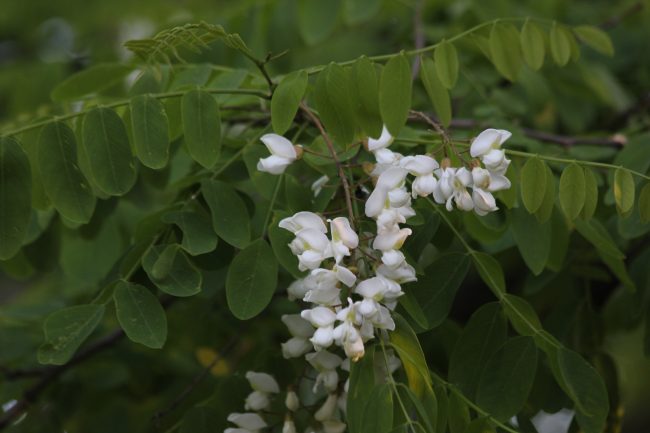Stephen Middleton from the Friends of Alexandra Park is kindly introducing some of his favourite trees from across the 196 acres of our park. Here is his selection for June:
Large and spreading, the False Acacia (Robinia pseudoacacia) is to be found by following the road down from the Go-Ape until it turns to the right. The tree stands near a large statuesque dead oak tree.
Look around the tree and you will find suckers coming up from the roots with aggressive pairs of spines, but the tree itself is not armoured. Older trees and some specially bred varieties are spineless.
False acacias are late to come into leaf and this year the tree has waited until June to start flowering.
Each individual leaf of the tree is divided up into leaflets in the same way as an ash, elder or rowan tree. A dense white cloud of nice scented blooms can cover the tree in some years, but in other years only a few flower bunches can be found. Later in the summer this year’s pods will appear on the tree giving a clue that false acacia is in the pea and bean family.
The tree originates from the Eastern United States. Over the pond it is prized for its timber quality being even harder than our native oak. In this country, it is largely just an ornamental tree. The French use the wood to make long lasting stakes for vineyards.

In Italy “Liquore ai Fiori di Robinia” is made by combining the flowers of this tree with honey and alcohol. The flowers can also be fried and eaten. Careful! Although the flowers are edible, the leaves and heavily ridged bark contain a poison, robin, which is related to ricin.

The trees grow fast when young; shooting up at a prodigious rate. This makes robinia also useful for firewood production in the U.S.. When a tree is cut down, spiky suckers from the roots can continue to shoot up for years to come.
A particularly nice golden form of this tree can be found near the Boating Lake and this ‘Frisia’ variety is the garden favourite.
